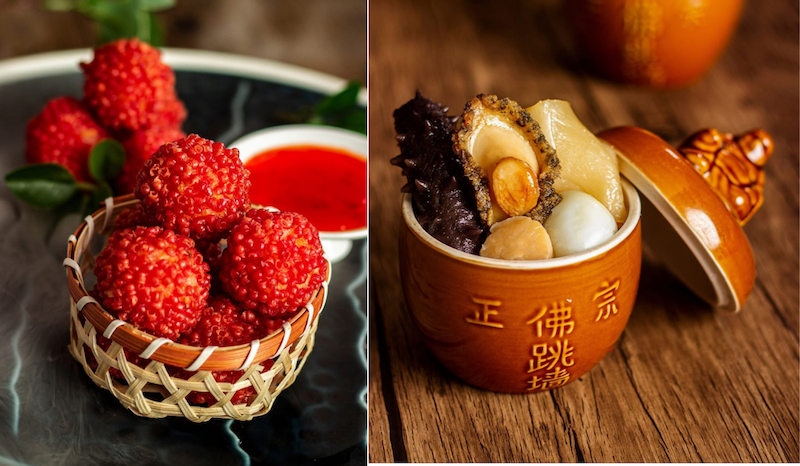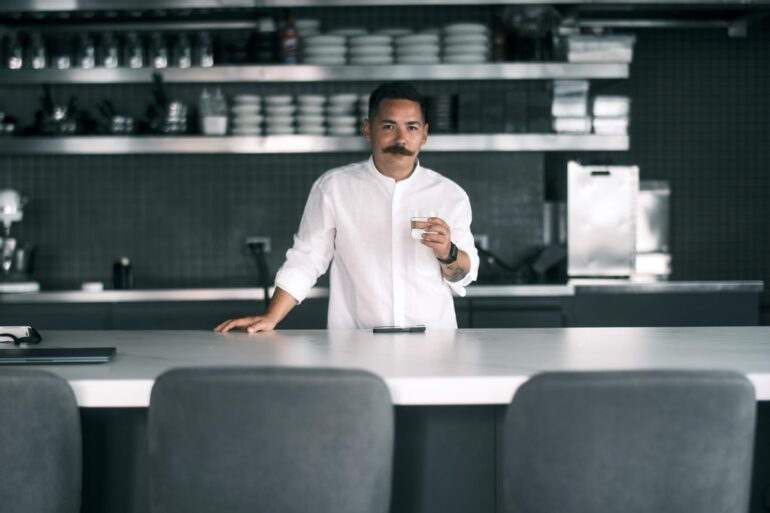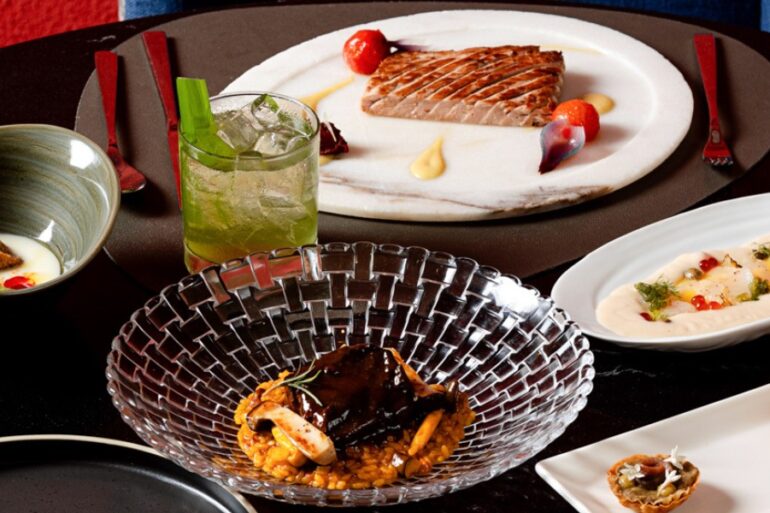In Fujian cuisine, dishes once served only in imperial palaces are layered with time, tradition, and a touch of theatrical flair.
It is placed in front of me, this soup in a ceramic bowl, its lid topped with a serene, cross-legged Buddha. When you lift the cover, the first thing you notice isn’t the aroma but the lotus leaf draped over the entire brim like nature’s own blanket. To reach the soup beneath, you have to pierce it with your spoon, and only then does it release a faint aroma that wraps around you before you even taste the broth.
That it’s shrouded like a secret is a fitting introduction to this dish from China’s Fujian province, the centerpiece of Edsa Shangri-La Hotel’s limited-edition Fujian Min Special featuring the legendary cuisine of the province.
The soup is traditionally (and whimsically) called “Buddha Jumps Over the Wall.” As the folk story goes, a scholar was once simmering soup in the southwestern province when a Buddhist monk caught a whiff of it and he found it so tempting that he vaulted over a monastery wall to have a taste. Vows of hunger and decorum be damned!
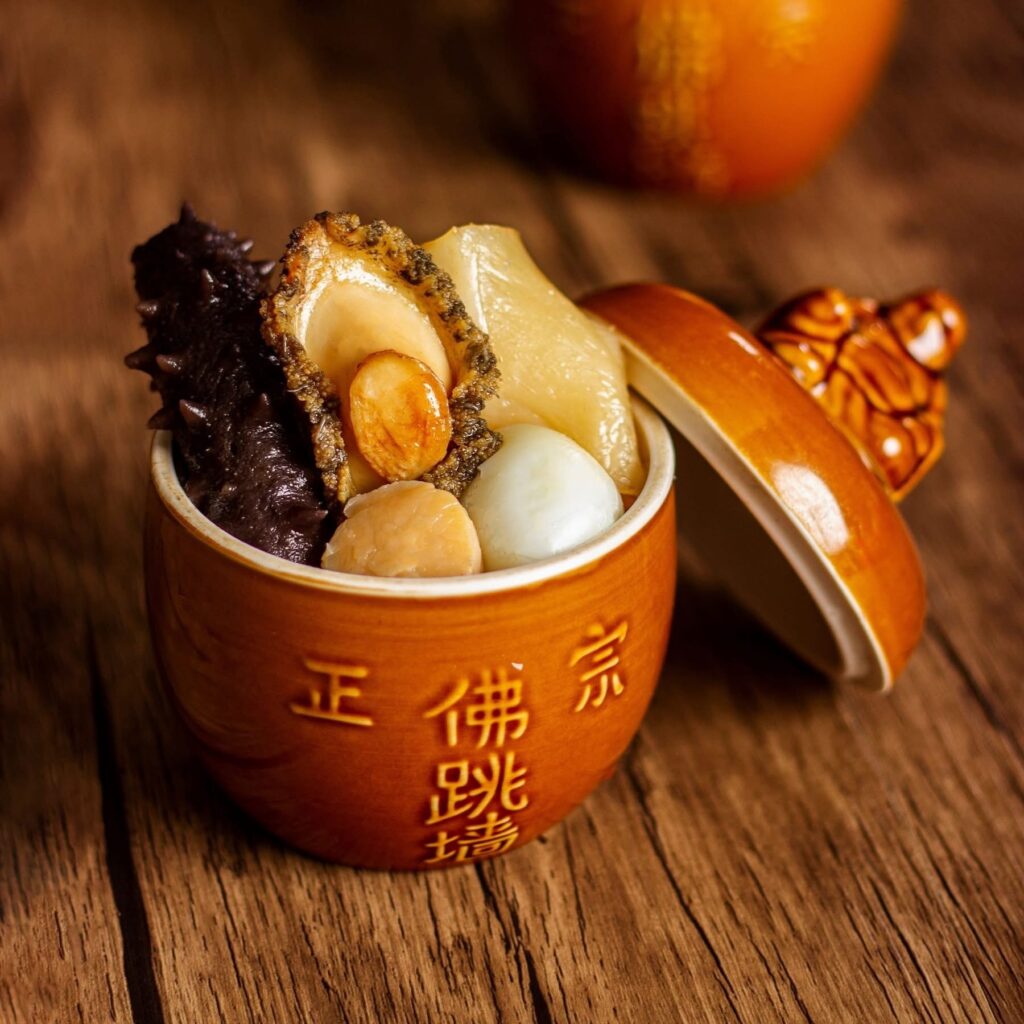
So, is this soup really that good that even the most disciplined wise men would break the rules to have it? While I love a clean, clear soup, this was anything but. Buddha Jumps Over the Wall is steeped in the sheen of long-simmered stock with abalone, scallop and sea cucumbers among its ingredients, each one tasting like it was born from the myths of the sea.
Edsa Shangri-La Hotel General Manager Stanley Lo explains that this soup stands out among Fujian’s many heritage dishes because it used to be enjoyed only “at the imperial palace for all its superior ingredients. To this day, it’s not very accessible in most restaurants because of the precision and time it takes to prepare it, but when people have it, it’s usually for a celebration or a milestone occasion.”
Related story: Rain, reroutes, and really good food—here’s what went down at Tagaytay Food Festival 2025
Related story: Chef Robby Goco serves a Greek-inspired recipe for longevity
Related story: How Nadine Lustre’s Siargao restaurant changed my mind about plant-based food
He adds that the rest of the dishes at this tasting dinner are meant to be “enjoyed every day though they take a lot of time to prepare—usually by an elder family member.”
There was no sign of a monk lingering at Summer Palace, but Stanley did introduce us to the visiting chefs from Shangri-La Fuzhou, who brought with them not only their expertise or heritage, but also special ingredients from Fujian’s capital city.
Buddha Jumps Over the Wall happens to be Stanley’s favorite dish, too, though he prefaces the confession with, “I’m rather quite simple.”
Is that lychee? No, it’s chestnut
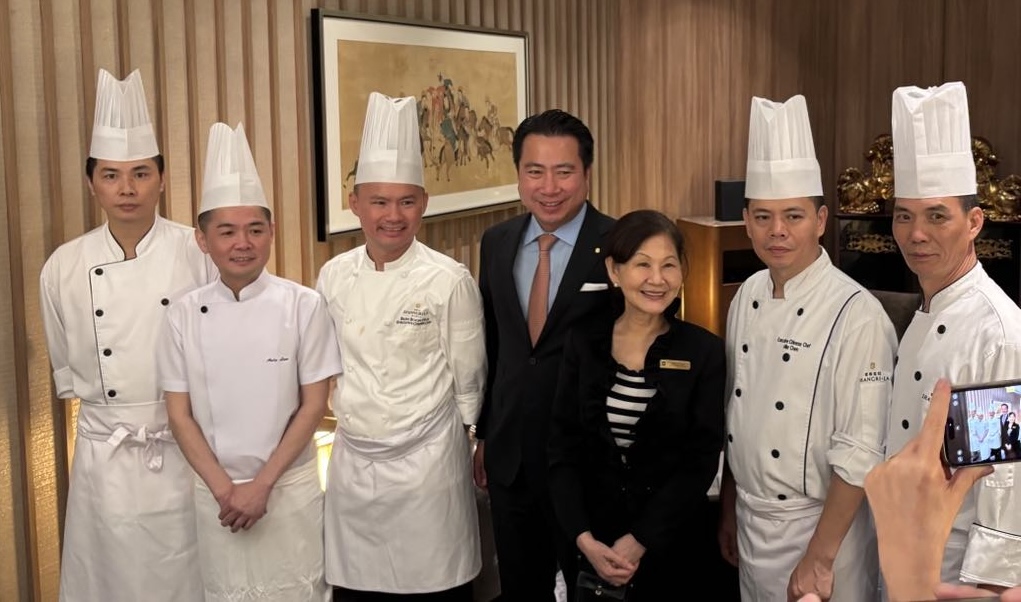
But simple is a relative term, especially when it includes sweet and sour pork painstakingly made to look like lychee, or conch slices blushing pink from a quick stir-fry with fragrant wine lees. In Fujian cuisine, even everyday dishes are layered with tradition and a touch of theatrical flair.
If I didn’t know the dish was sweet and sour pork, I wouldn’t have known it just from looking at it. Each piece of pork is sliced crisscross to look like the fruit’s signature texture, and by your second glass of Cloudy Bay pinot noir from New Zealand, you’d swear there really was lychee in it (there’s not).
Stanley explains that lychee is the most popular fruit in southern China. “The entire presentation is different. It has the look and texture of a lychee but what’s inside it is actually chestnut. You get the taste of chestnut, the sweet and sour pork, and red rice wine.”
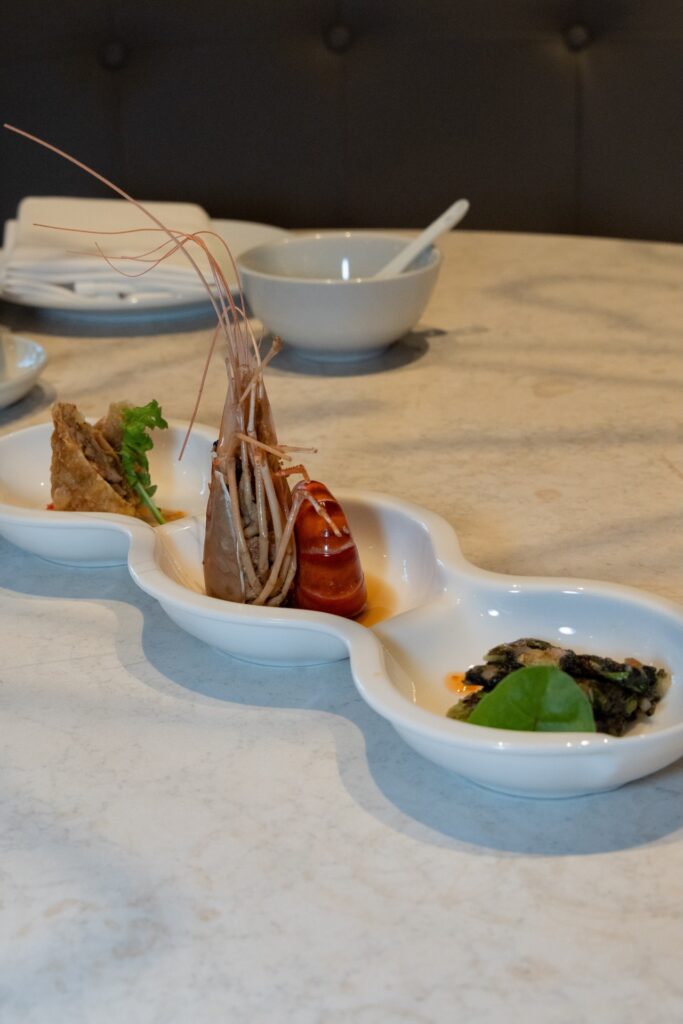
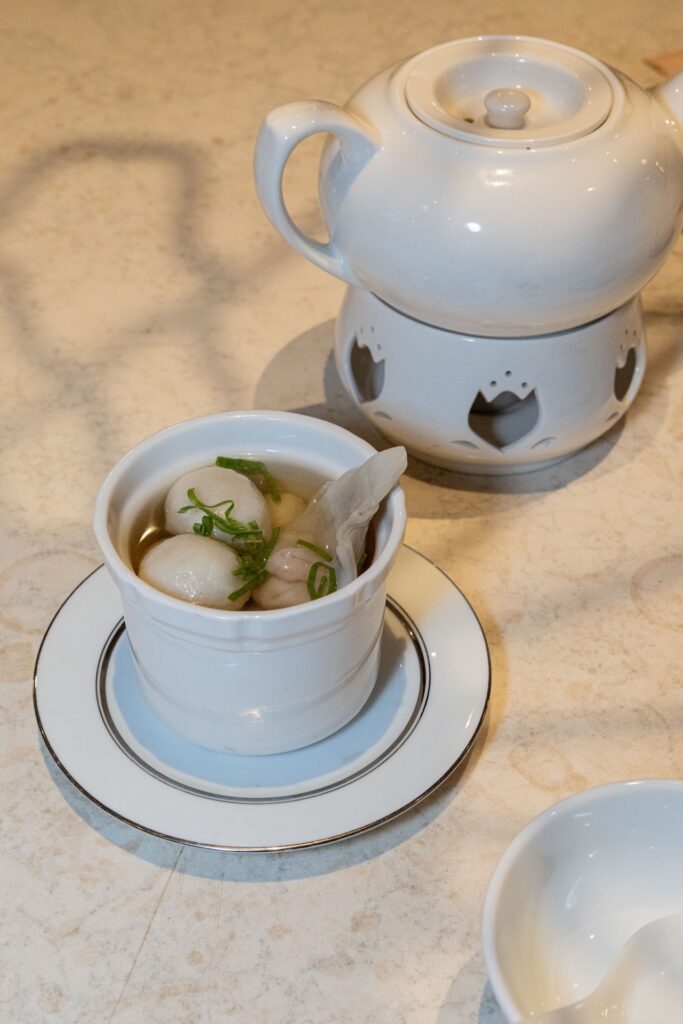
(Clockwise from left) Appetizer of pan-fried seaweed, crispy meat roll and drunken prawn; Fuzhou fishball and dumpling in Chinese broth; deep-fried prawn with tea leaves; and sweet mashed taro
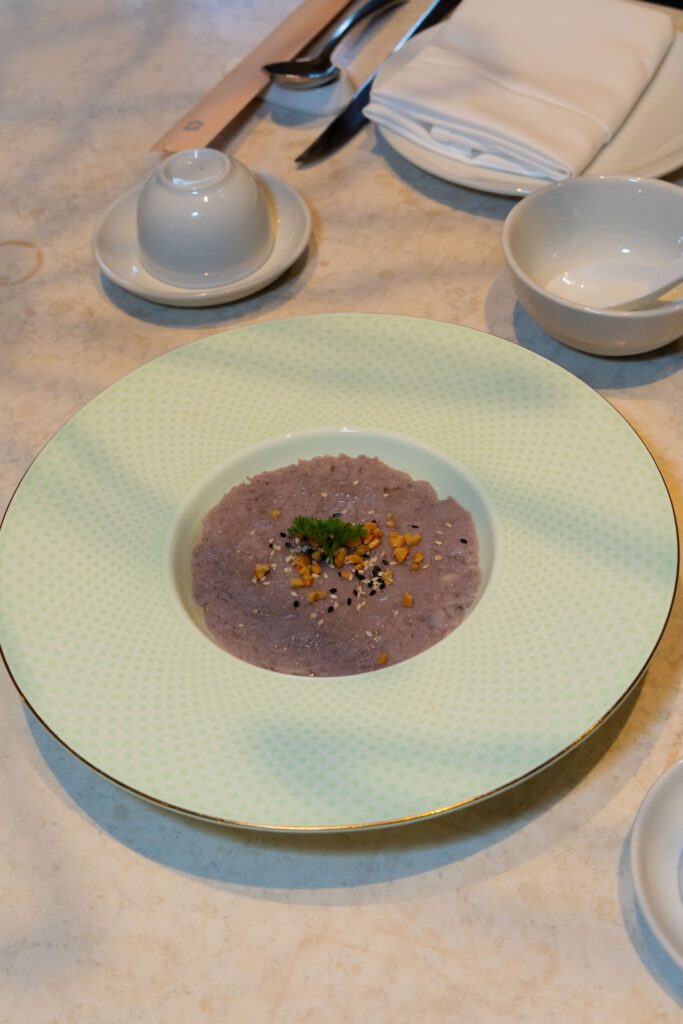

A popular legend goes that this particular Fujian style was created in honor of a Tang Dynasty empress who adored lychees. Fujian chefs were unable to get fresh lychees all year round, so they invented a dish to mimic the fruit while showcasing local flavors.
The empress might have asked her chefs at one point, “Is that sweet and sour?” Much like the way people looking at an apple presented by a baker might ask, “Is that cake?” I exaggerate, of course, but you get the point.
I’ve never been a fan of sweet and sour pork—it isn’t something I would order at a restaurant because I just don’t like these two flavors mixing in my mouth. But I like this Fujian version because I could hardly taste the tangy flavor—plus its origin story is entertaining.
“Another thing to note is that our founder of Shangri-La Hotels, Robert Kuok, is from Fuzhou, Fujian,” Stanley says. “The same goes for many philanthropists in the Philippines like Henry Sy and Andrew Tan.”
In fact, 90 percent of the first generation Filipino-Chinese trace their origins from the province. Henry Sy was born in Jinjiang in 1924, and Andrew Tan was born in Quanzhou in 1954—their towns a mere 25 kilometers from each other.
Wine lees is more
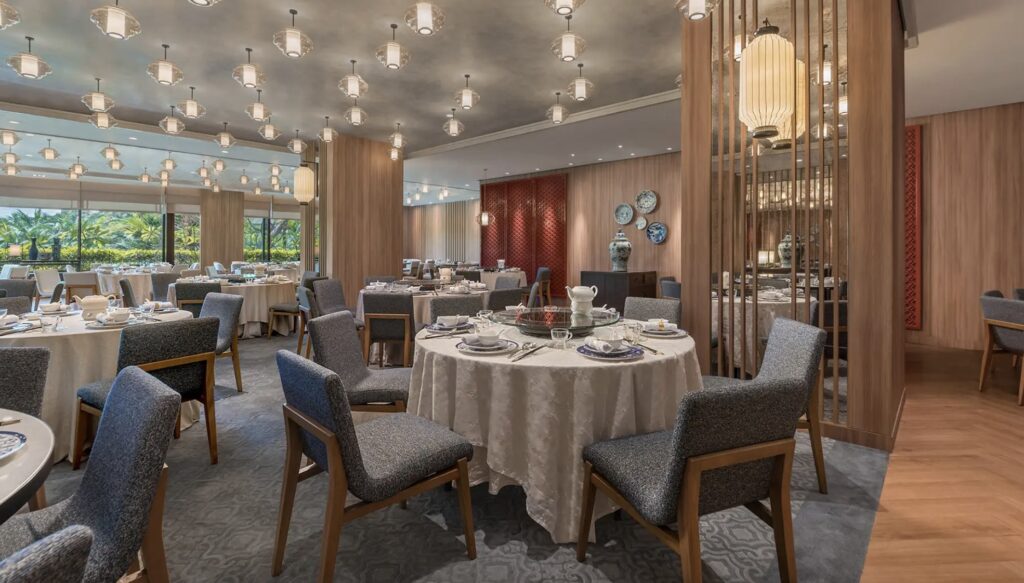
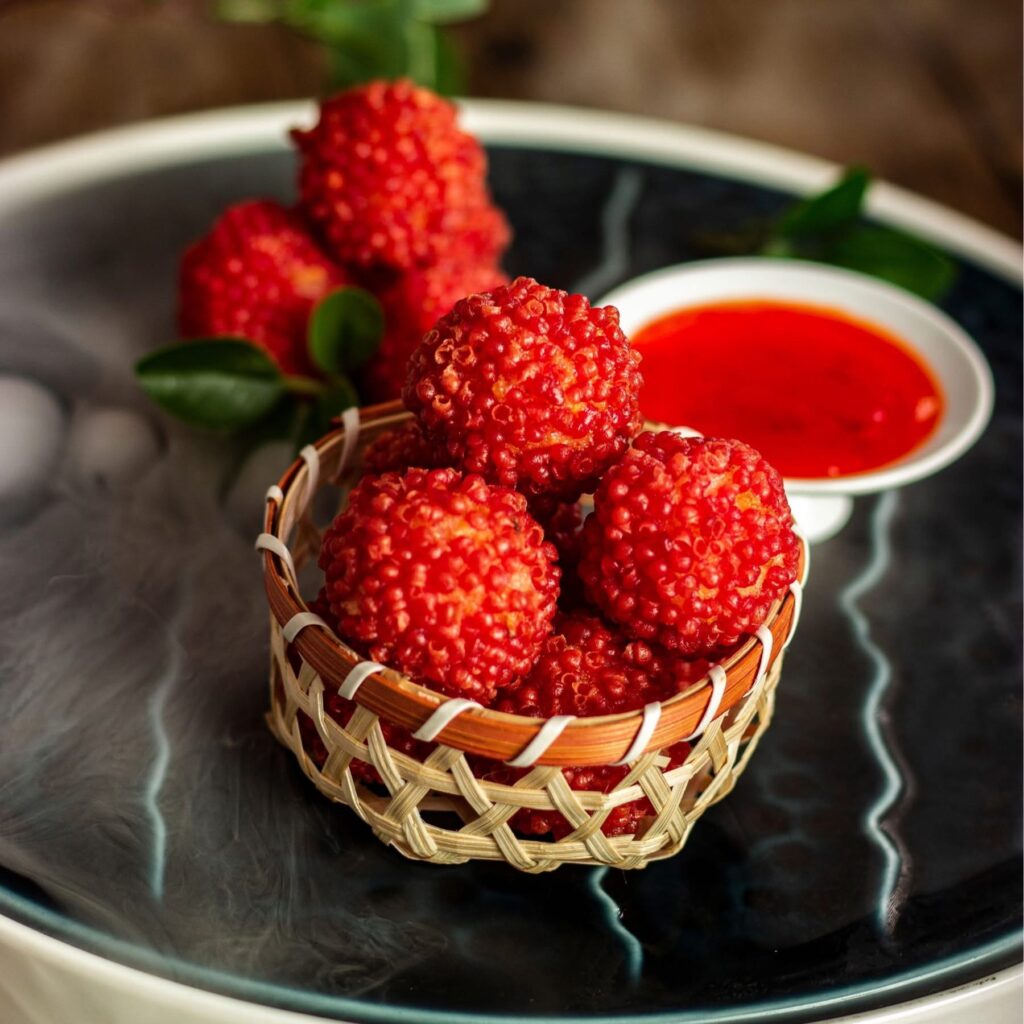

Among Fuzhou’s signature dishes is the Stir-Fried Conch Slices with Wine Lees. There is no legend attached to this dish but some explanation is needed. “Wine lees” is a sort of a mash that’s left after fermenting glutinous rice into wine. Fuzhou’s version is aromatic and showcases the province’s love for seafood.
One more thing Fujian is known for is tea — the leaves of which the chefs used to perfume their deep-fried prawn dish; and taro, mashed into a not-too-sweet finale to the eight-course dinner.
“Fujian Min Special is the first we’re holding this year because it’s really to let the majority of our loyal guests bring back the memory of their grandfather and grandmother, who probably used to bring them to a restaurant like this before,” says Stanley.
Like any dish worth sharing, it’s not just the food that brings happiness, but the memories it stirs.
Edsa Shangri-La Hotel’s Fujian Min Special, running only until August 15, features a set dinner and an a la carte menu. Visit their website, email Summer Palace, or call +63286338888.

